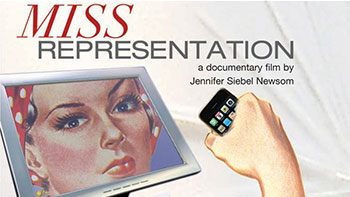Editorial Intern Rachel Grate continues her series on Christmas traditions and gender stereotypes
by Rachel Grate
With Christmas shopping underway, commercials are starting to seem like little kids jumping up and down screaming, “Pick me! Pick me!” And unfortunately, some retailers are resorting to tired stereotypes to win our business.
As we learned yesterday, Christmas songs often describe kids choosing gendered toys – Barney and Ben want boots and guns, Janice and Jen want dolls (“It’s Beginning to Look a Lot Like Christmas”). But this phenomenon isn’t limited to songs – the gendering of kids’ toys is inherent in most advertisements. As a business model, it makes sense – after all, if a son and daughter refuse to play with the same toys, parents have to buy twice as much to satisfy their kids’ demands.
Take the above Hallmark advertisement, for instance. While the concept is cute, I can’t help but question why the girl wants “a ballerina tutu, a pink bike” and “a princess doll.” If a little boy were writing to Santa, Hallmark wouldn’t put any of those items on his list – but a boy in real life might.
Advertisements don’t have to be gendered to be successful. Top Toy, a Swedish toy maker, recently released their Christmas toy catalogue for Denmark and Sweden – and in the Swedish version of the catalogue the genders of the kids playing with toys have been switched. In the glossy pages, boys are shown playing with dollhouses and girls with Nerf guns – just as kids play in real life.
This sort of gender-neutral advertising isn’t seen in the United States. Eighth grader McKenna Pope noticed this oversight in the advertisements of Hasbro when brainstorming gifts to get her four-year-old brother. In a video (below), her little brother tells her he wants a dinosaur and an Easy-Bake Oven for Christmas.
“Why don’t they have any boys in the Easy-Bake Oven commercial?” McKenna asks her brother. “You think they should put boys, right? Because boys like to cook too, right?”
In response, McKenna started a change.org petition with over 38,000 to feature boys in the packaging of the Easy-Bake Oven, as a step to achieve gender equality in toy advertising – against the societal norms that McKenna notes reinforce that girls are the only ones in the kitchen.
Christmas commercials aimed toward adults further enforce these harmful societal norms. Asda and Morrisons, both UK companies, have released Christmas ads that do acknowledge how stressful Christmas can be. Unfortunately, they do so by relying on 1950s style gender roles – the women are running around cooking and shopping to exhaustion while their foolish husbands stand back, suffering from what The Frisky diagnosed as “‘Doofus Husband Syndrome,’ where they are unable to make decisions related to the home.”
“It doesn’t just happen by magic. Behind every great Christmas, there’s Mum,” the Asda commercial concludes. The problem is, a Christmas where the mom is burdened with all the work and none of the reward is not a “great” Christmas. In fact, it’s a pretty awful one.
As Bitch magazine noted about the Morrisons ad, “It might be refreshingly honest if it didn’t end by saying she ‘wouldn’t have it any other way.’ If you’re a mom, Christmas SHOULD make you miserable!”
Consumers aren’t siting back and accepting these stereotypes – instead, the Asda ad received over 186 complaints in the first ten days it was on air, in addition to social media action. As a result, Asda apologized for any offense they’ve caused – but the ad continues to air.
In America, this Sears ad shows the other side of this stereotype- the “Doofus Husband” running around trying to find the perfect gift for his wife, and losing his child in the process. In addition, the man is portrayed as an idiot for thinking of getting his wife power tools – because of course her real preference is jewelry.
Jewelry commercials are perhaps the most obvious example of gender stereotypes there are. Nonetheless, the Zales Christmas ad (below) surpasses its peers by suggesting that jewelry can be exchanged for sex.
These messages both reinforce unhealthy relationship dynamics. Sexualized images of girls and women result in boys’ developing unrealistic and unhealthy expectations of their appearance (Girl Scouts) – and in the context of the Zales commercial, also of their behavior.
Girls between 11 and 14 see on average 500 ads a day. Advertisers know that kids constantly begging adults for toys they saw in ads is a more effective tactic than targeting the ads to adults – and kid see the advertisements targeted towards adults as well. Unfortunately, when kids internalize this gendered advertising, it has negative effects on their future.
In my letter to Santa this year, I’m asking for an end to sexist advertising. But just in case Santa is a little to busy to get to me, I’m using Twitter to tell these advertisers that I’m #NotBuyingIt. Will you join me?
Rachel Grate is an intern at MissRepresentation.org and a student at Scripps College, where she is studying English and Gender & Women’s Studies. Read more of her work on her blog or connect with her via LinkedIn.



